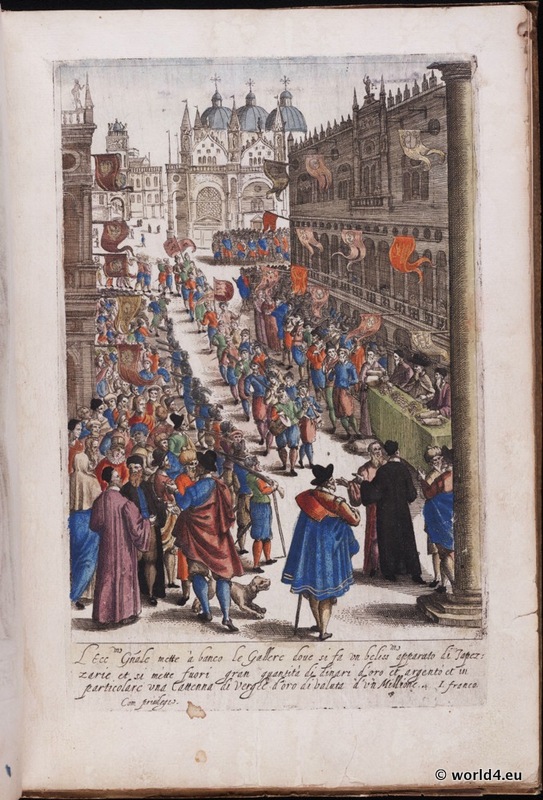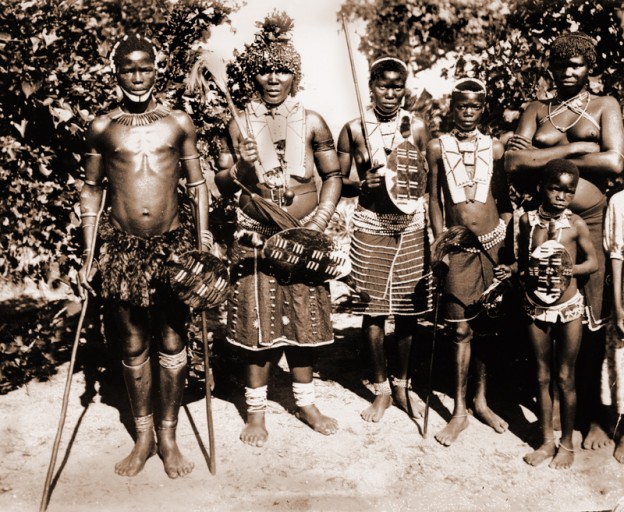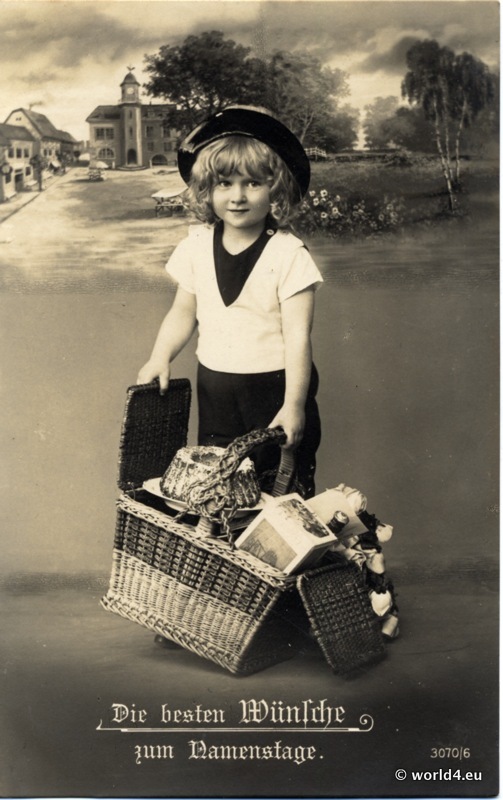Traditional woman clothing from Russia Peasant costume from the Donetskaya province, Russia, 1900. Photographer: Prokudin-Gorskiĭ, Sergeĭ Mikhaĭlovich, 1863-1944. Source and Photo Rights
Venice fashion in 16th century.
Venice, fashion during the Italian renaissance, 16th century. Source: Giacomo Franco (1550-1620). Habiti d’huomeni et donne venetiane: con la processione della serma. Signoria et altri particolari cioè trionfi feste et cerimonie… Read More
South African Zulu peoples, ethnic group of the Bantu.
Zulu peoples 19thc.. The Zulu are the largest ethnic group in South Africa.
Children`s country costumes. Traditional bavarian clothing.
Children`s country costumes. Traditional bavarian clothing, 1920s. Vintage Postcard. Girl and boy with big hat in beautiful traditional children’s costumes from Bavaria.
Boy fashion in 1910s. Sailor suit.
Boy fashion in 1910s. Sailor suit. Shown is a boy in a sailor suit. He holds a bouquet of flowers in his hands. This is a greeting card on his… Read More
German Girls clothing in 1910.
Children’s clothing in 1910, Germany. Vintage Postcard. Girls costumes with delicate lace tippets. German children fashion around the turn of the century.
German Girls Fashion in 1910s
German Girls Fashion in 1910. Vintage Postcard. It shows a girl in a beautiful dress and lovely hat. She holds a bouquet of flowers in his hands. This is an… Read More
Popular Belle Époque, Art nouveau, Neoclassical
Popular Belle Époque, Art nouveau, Neoclassical Styl Berlin 1890 to 1910. Glamour, kitsch, popular [su_row] [su_column size=”1/2″] [/su_column] [su_column size=”1/2″] [/su_column] [/su_row] Related: Fin de siècle era, Art Nouveau, Art… Read More
German child costumes in 1920s
German child costumes in 1920s. Children on greeting cards. Child decorated with flowers and sweet costume as a symbol for spring. Greeting card, name-day. German Girl in at that time… Read More
French hat fashion. Girl from France in 1920s.
French hat fashion in 1920s. Greeting card Bonne Année. Postcard of french fashion model with turban hat, from 1910







